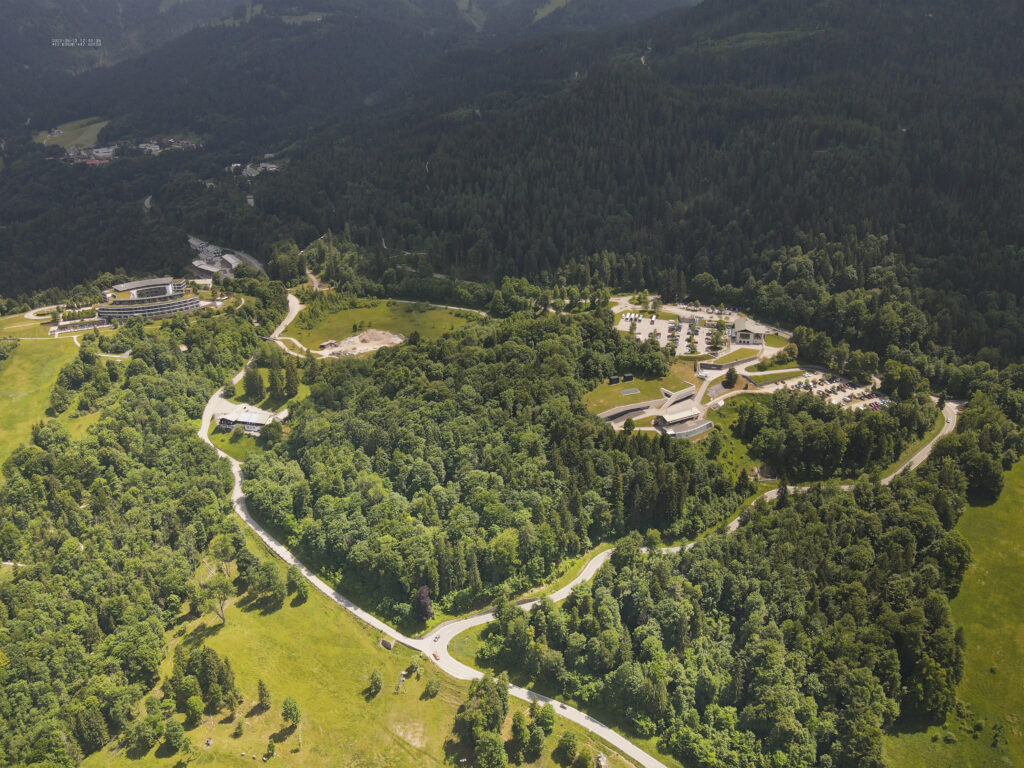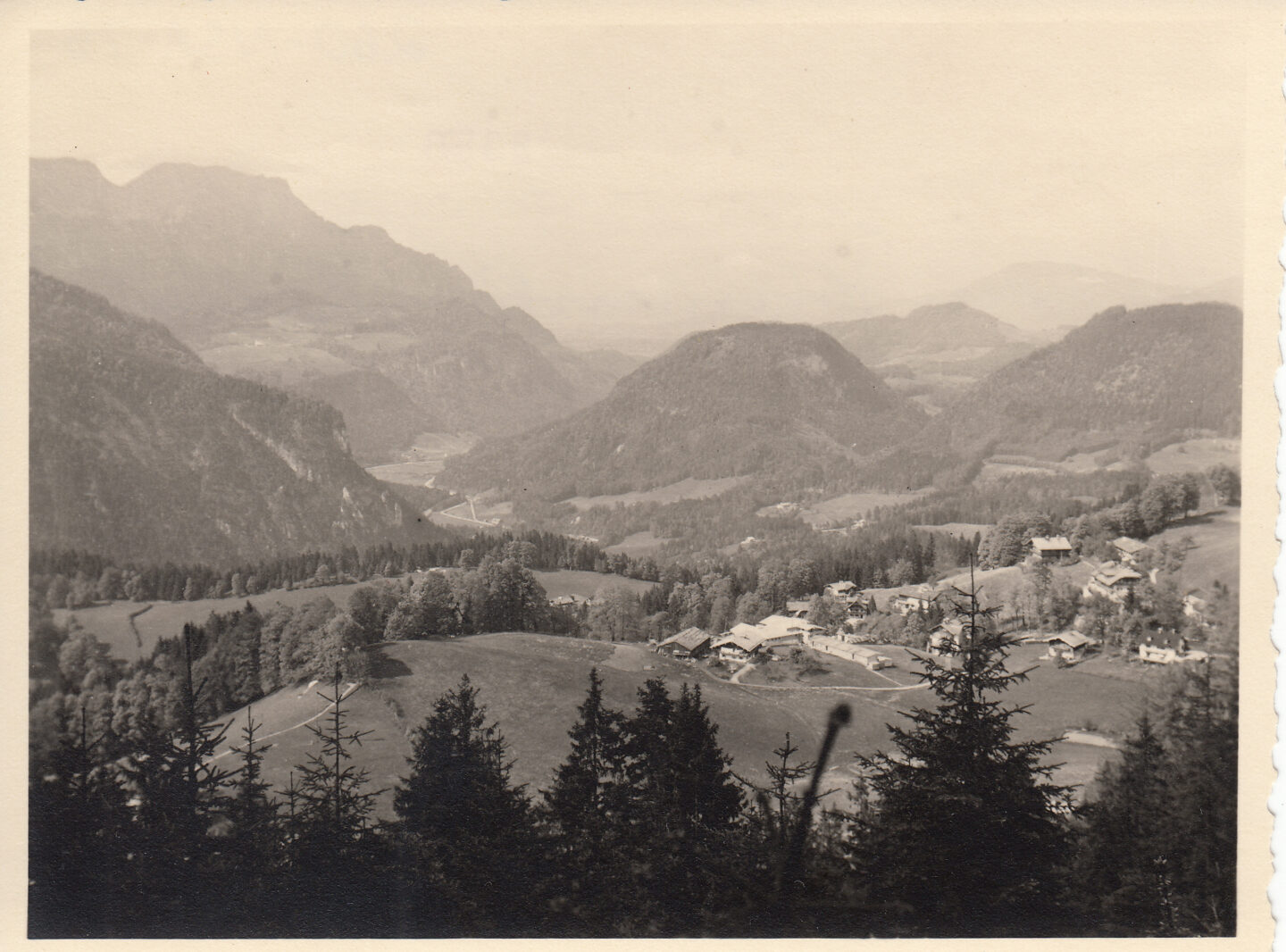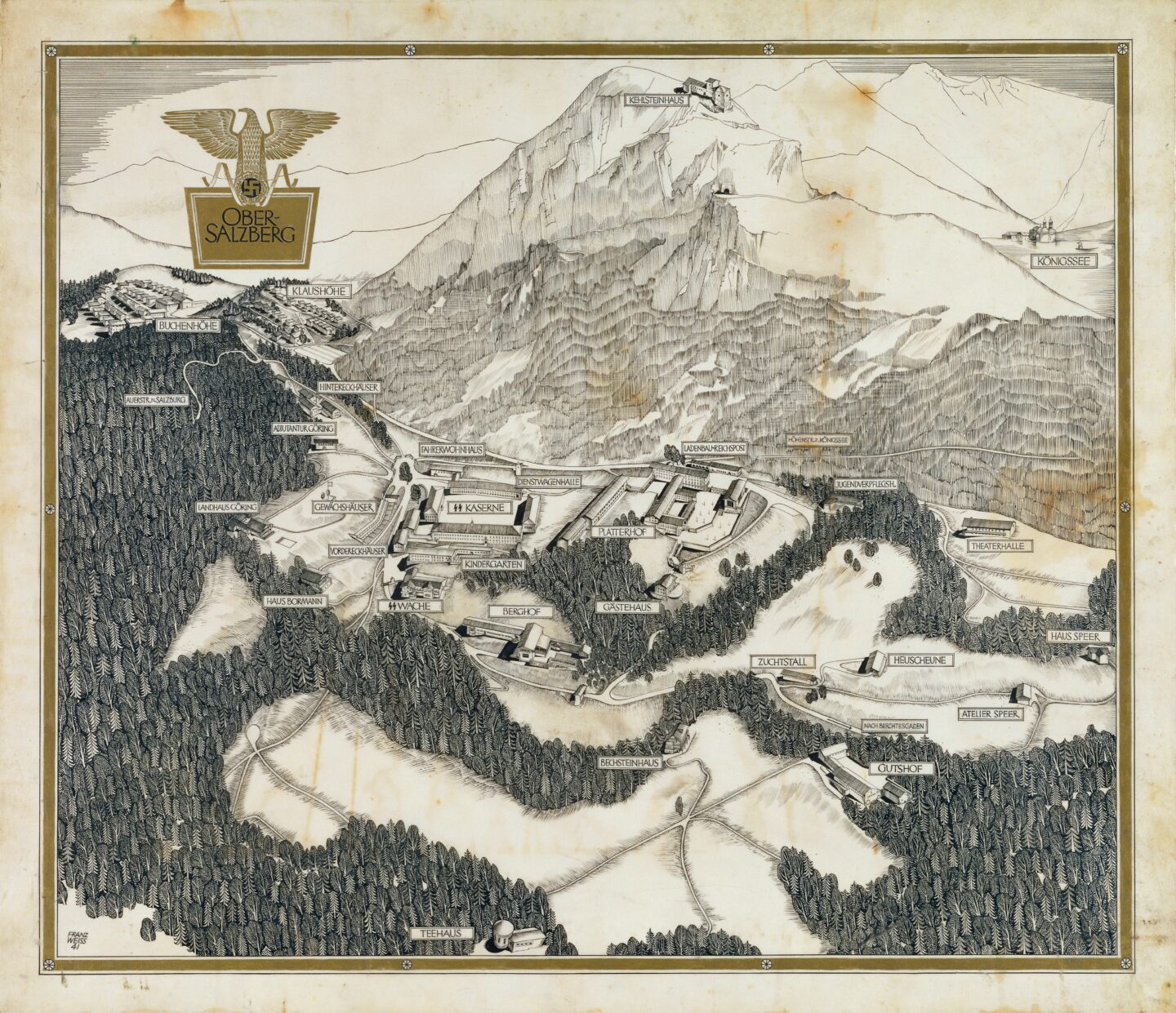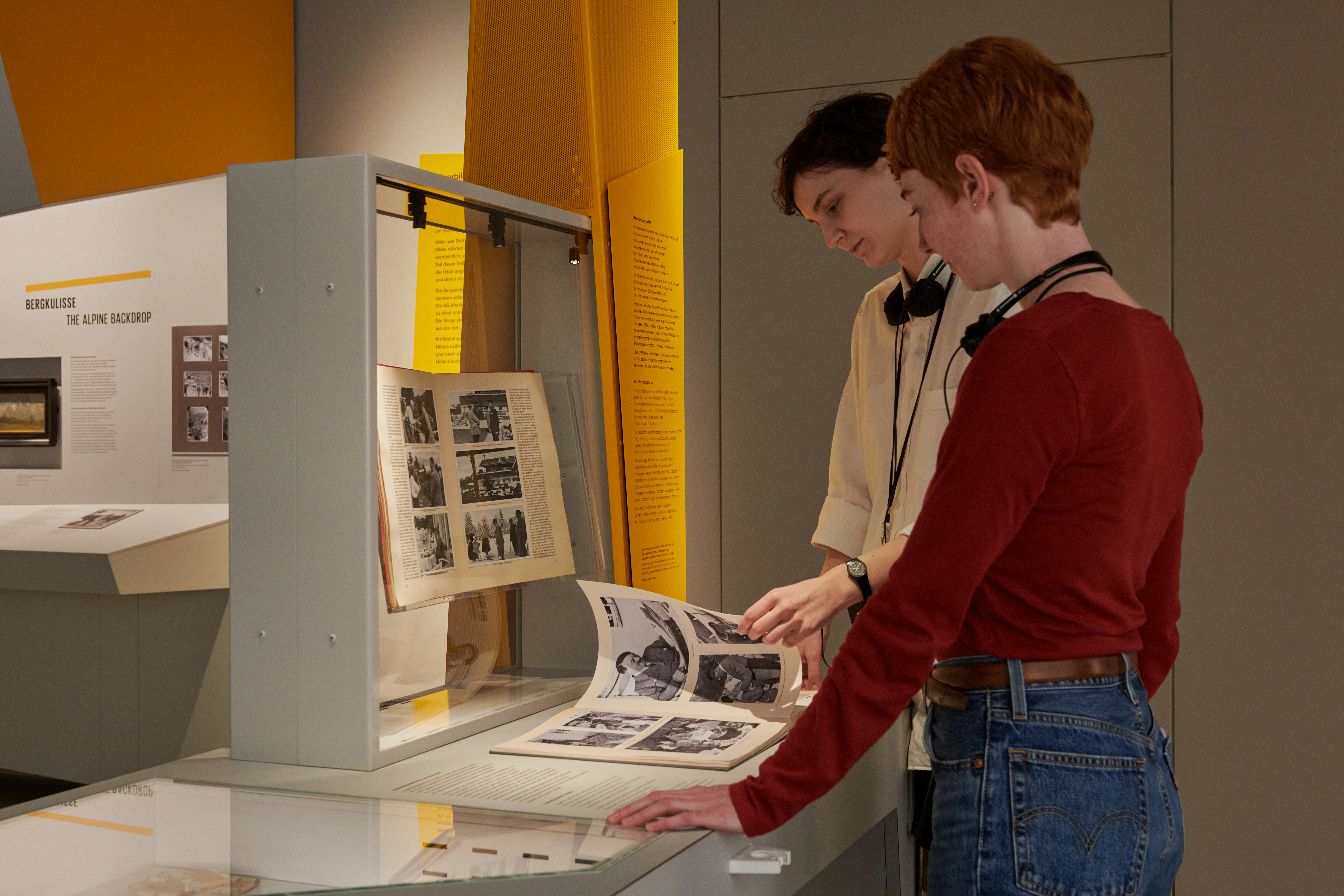The Alpine village Obersalzberg was already a popular tourist destination in the 1920s.
Historic Location
 Fortbildungsinstitut der bayerischen Polizei
Fortbildungsinstitut der bayerischen Polizei
Obersalzberg
Adolf Hitler had a residence at Obersalzberg. Between 1933 and 1945 this was the most important power center of the Nazi tyranny beside Berlin.
Today Obersalzberg attracts many tourists. At the same time, it is an important location of education and remembrance of the Nazi era. In the course of the twentieth century the place has changed radically – first through and for Hitler, then after and against Hitler.
Before 1933
Alpine farming village and high altitude spa resort
Before 1933, Obersalzberg was an Alpine farming village and a popular tourist resort. From the 1860s onwards, an increasing number of aristocrats and wealthy people from cities came to Obersalzberg to spend their summers here. Some of them liked the place so much that they bought vacation homes. Many small hotels and guesthouses opened. From 1921, Obersalzberg was officially known as a “high altitude health resort”.
Adolf Hitler came to Obersalzberg for the first time in 1923. From then on, he would often retreat here, especially when he needed to prepare important political decisions. In 1928, he rented Wachenfeld House and in 1933 he bought it.
 National Archives and Records Administration
National Archives and Records Administration
1933-1945
The Führer’s off-limits area as a control center of power
After the Nazis came to power in 1933, Wachenfeld House had to fulfil new requirements and it soon became too modest and too small for the Führer. He therefore had it expanded and refurbished in several stages into the showcase Berghof. The work was completed in 1936. It became a mixture of seat of government and private residence where the dictator made political decisions about persecution, war and genocide in his circle of close associates.
At the same time Nazi propaganda used the idyllic mountain setting as a backdrop for projecting a media image of Hitler as a chancellor who was close to the people, who loved children and nature, and who was both a good neighbor and a great statesman. The Berghof formed the center of a rigorously cordoned-off area for the Führer. Other leading Nazis such as Hermann Göring, Martin Bormann and Albert Speer also owned homes here. There were also a barrack for SS guards, administrative buildings and an estate to supply the Berghof. The village and its residents had to make way for the new inhabitants. Most of their houses were razed to the ground and only a few continued to be used.
On 25 April 1945, the British Royal Air Force bombed the site and destroyed most of the buildings.
The so-called Führer’s off-limits area was created during the 1930s. The pen-and-ink drawing by Franz Weiss dating from1941 shows an idealized scene: this was how it was supposed to look after work was completed. Nothing was left of the old Alpine house.
 Dokumentation Obersalzberg/Sammlung B104
Dokumentation Obersalzberg/Sammlung B104
Obersalzberg after 1945
Tourist resort and place of education
On 4 May 1945, US and French soldiers occupied Obersalzberg. The US Army used the site as a Recreation Area until 1996 and sent US soldiers from all over Europe here for relaxation.
Fearing that Obersalzberg might become a new place of “pilgrimage” for Hitler fans, the Bavarian government and the US occupation authorities had almost all the ruins, including those of the Berghof, blown up in 1952. But the Nazi history of Obersalzberg continued to attract both curious visitors and admirers of Hitler.
After the US forces had left, the Bavarian government agreed on a dual concept together with the county council and the municipality of Berchtesgaden: the revival and promotion of tourism at Obersalzberg was to go hand in hand with a historical appraisal of Nazi history. The Obersalzberg Documentation Center as a place of information, education and remembrance opened on 20 October 1999.
